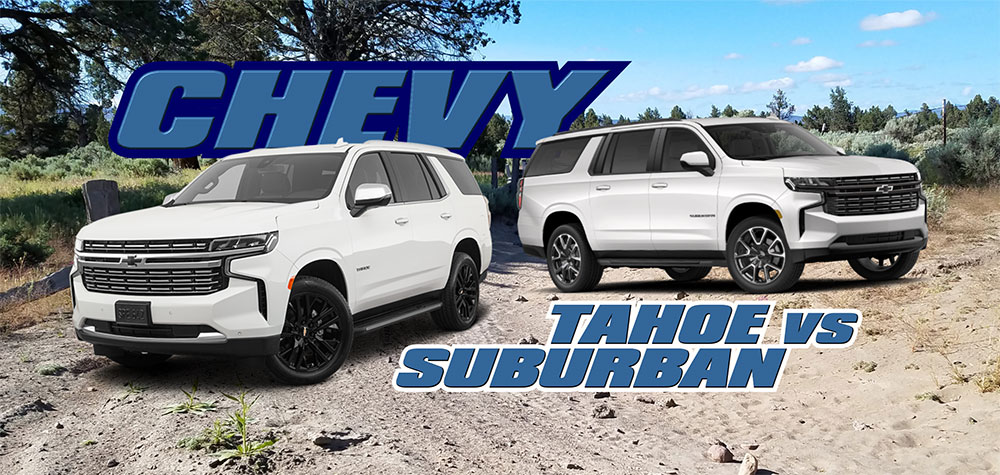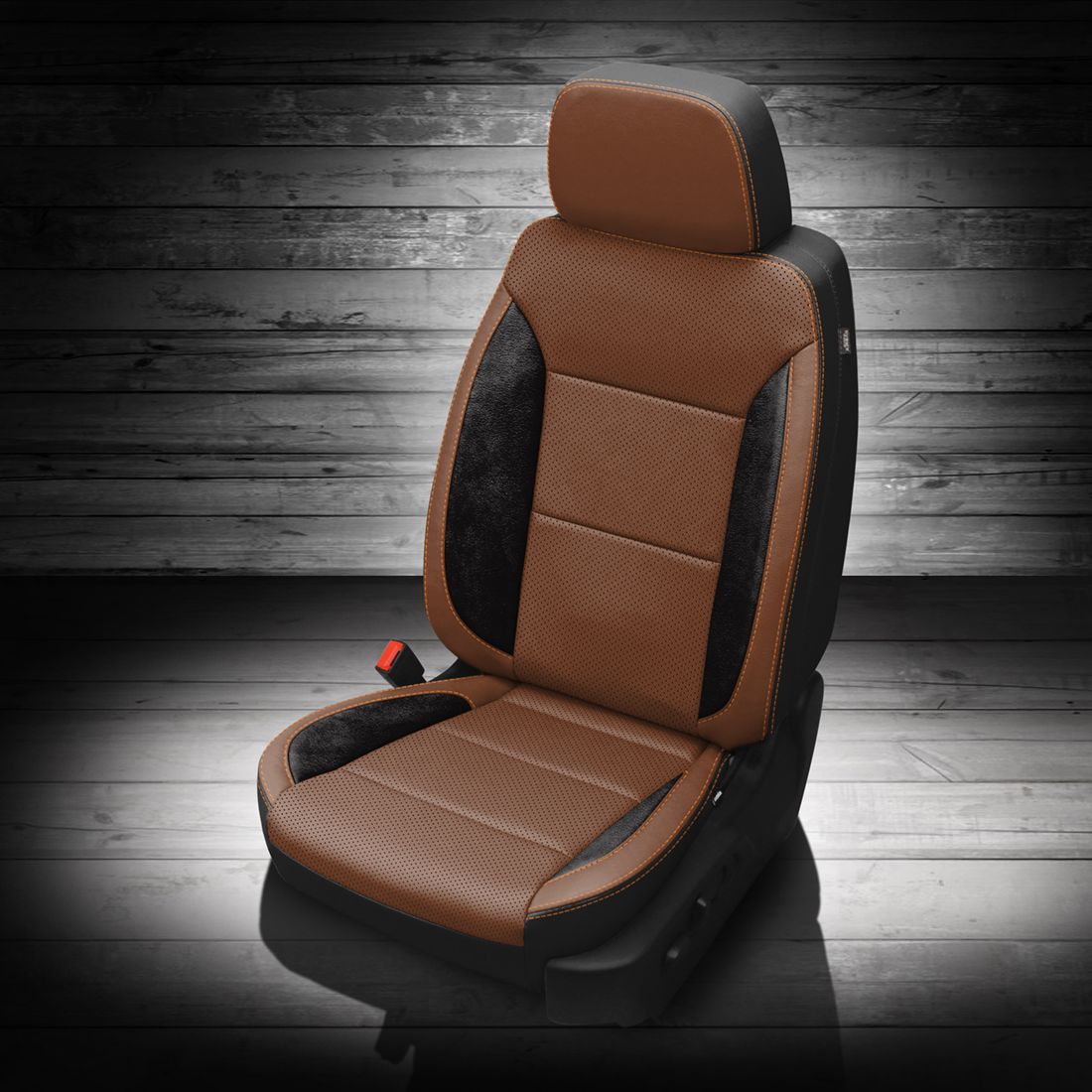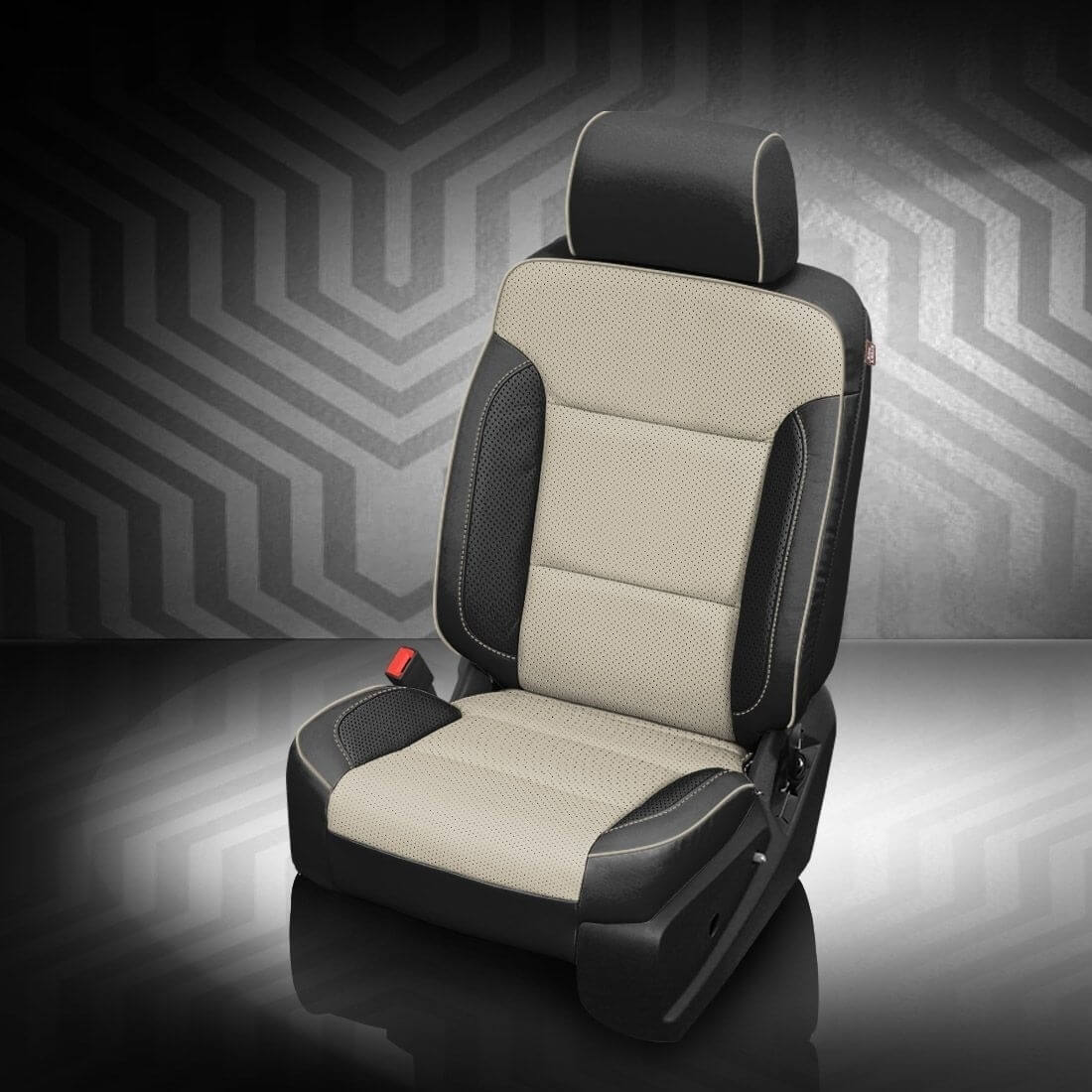
If your family is looking for a full-size SUV, you may be comparing the Chevy Tahoe vs Suburban. Both vehicles are known for their spacious interiors perfect for hauling both kids and cargo. But how do they compare? And which one is right for you?
In this blog post, we’ll go deep to compare the Chevy Tahoe vs Suburban, exploring key features, performance metrics, specifications, and value. Whether you need a family-friendly vehicle or a ride that can handle some adventure, looking closely at these two Chevy giants will help you make an informed decision.
The Honda vs Toyota Reliability Guide
Chevy Tahoe vs Suburban
When comparing the Chevy Tahoe vs Suburban, it’s easy to see that these full-size SUVs are very similar. Built on a truck base, the main differences between the two is the size and the price. As the larger of the two, the Suburban has more interior space and cargo space. Meanwhile, the Tahoe is easier to maneuver because it’s shorter than the Suburban.
The choice between the two often comes down to your individual needs. The Tahoe works well for those who want a large SUV but don’t necessarily need the extra space of the Suburban. The Suburban is ideal for large families or those who carry a lot of passengers or cargo. Let’s dive into the specs and dimensions to see how the Chevy Tahoe vs Suburban compare!
Tahoe vs Suburban Specs
2023 Tahoe
Engine: 5.3-liter V8
Engine type: Gas
Gas tank capacity: 24 gallons
Fuel economy: 15/20/17 city/highway/combined mpg
Range: 360/480 miles city/highway
Transmission: 10-speed automatic
Drive type: 4WD
Rear limited slip differential: Standard
Horsepower: 355 hp @ 5600 rpm
Torque: 383 pound-per-feet @ 4100 rpm
Passenger capacity: 7
Displacement: 325 in-cubed
0-60 speed: 7.5 seconds
Quarter mile: 15.8 seconds
Braking, 70-0 mph: 184 feet
Curb weight: 5661 pounds
2023 Suburban
Engine: 5.3-liter V8
Engine type: Gas
Gas tank capacity: 28 gallons
Fuel economy: 15/19/16 city/highway/combined mpg
Range: 420/532 miles city/highway
Transmission: 10-speed automatic
Drive type: 4WD
Rear limited slip differential: Standard
Horsepower: 355 hp @ 5600 rpm
Torque: 383 pound-per-feet @ 4100 rpm
Passenger capacity: 7, with options for up to 9
Displacement: 376 in-cubed
0-60 speed: 6.1 seconds
Quarter mile: 14.5 seconds
Braking, 70-0 mph: 166 feet
Curb weight: 5824 pounds
Tahoe vs Suburban Length and Exterior Dimensions
One of the main differences between the Chevy Tahoe and Suburban is their length. With a wheelbase of 134.1 inches and a total length of 225.7 inches, the Suburban is longer than the Tahoe, giving it more passenger room in the third row and more cargo space.
The Tahoe, on the other hand, has a wheelbase of 120.9 inches and a total length of 210.7 inches. The Tahoe is 15 inches shorter overall than the Suburban. Because of its shorter length, many people find it easier to maneuver around corners than the Suburban.
Tahoe:
Wheelbase: 120.9 inches
Total length: 210.7 inches
Max width without mirrors: 81 inches
Height: 75.9 inches
Ground clearance: 8 inches
Suburban:
Wheelbase: 134.1 inches
Total length: 225.7 inches
Max width without mirrors: 81.1 inches
Height: 75.7 inches
Ground clearance: 8 inches
Interior Dimensions
The Tahoe and the Suburban are identical in dimensions until you get to the third row–the front row seats have 44.5 inches of legroom and the second row seats have 42 inches of legroom. In the Tahoe, the third row has 34.9 inches of legroom while the Suburban has 36.7 inches. That’s almost 2 inches of more legroom than the Tahoe.
Tahoe:
Front row legroom: 44.5 inches
Second row legroom: 42 inches
Third row legroom: 34.9 inches
Custom Chevy Tahoe Seat Covers
Suburban:
Front row legroom: 44.5 inches
Second row legroom: 42 inches
Third row legroom: 36.7 inches
Cargo Space
Because the Suburban has 15 more inches of length on the Tahoe, it also has quite a bit more cargo space. Behind the third row, the Suburban has 41.5 cubic feet of cargo space. In comparison, the Tahoe only has 25.5 cubic feet of cargo space. For additional cargo space, both the Tahoe and Suburban second and third rows can fold down. In the Suburban, that gives you a max of 144.7 cubic feet of cargo space, while the Tahoe maxes out at 122.9 inches of cargo space.
Interior Features
When looking at the interior features of the Chevy Tahoe vs Suburban, you’d almost think you’re looking at the same vehicle. The base LS models come with an 8-inch touchscreen, while the LT and above have a 10.2-inch touchscreen. Automatic climate control, power driver’s seats, a six-speaker audio system, and remote start come standard in the LS, but the LT and above come with a nine-speaker Bose system. Cloth seats are standard in the LS models, while the LT and above in both come with leather seats. For features like a heated steering wheel, perforated leather seats, a 10-speaker Bose system, and chrome details, look to the Premier and High Country trim levels. USB ports throughout all rows of the Tahoe and Suburban make for greater convenience for anyone riding in your SUV.
Engines Specs
You’d think with the difference in size there might be a difference in the engine of the Chevy Tahoe vs Suburban. However, both SUVs come with a 5.3-liter V8 engine that produces up to 355 hp and 383 pound-feet of torque. A 6.2-liter V8 is available in the Premier and comes standard in the High Country. This larger engine produces up to 420 hp and 460 pound-feet of torque. If you’re looking for improved fuel efficiency, a 3-liter Duramax Turbo Diesel engine is available in all models.
The Tahoe weighs about 200 pounds less than the Suburban and has slightly better fuel efficiency, with an EPA estimate of 15/20/17 city/highway/combined mpg. The Suburban performs slightly worse with an EPA estimate of 15/19/16 city/highway/combined mpg. With a fuel tank that holds 28 gallons, compared to 24 in the Tahoe, the Suburban will get you farther on a road trip.
Price Difference
With its additional length and space, the Suburban also comes with an added cost compared to the Tahoe. At the lowest trim level, the Suburban costs $3000 more than the Tahoe. That difference is less stark at the highest trim, with a difference in price of $1950. For further comparison, here are the starting prices of all Tahoe and Suburban models:
Tahoe:
LS: $59,095
LT: $64,595
Z71: $66,195
RST: $67,195
Premier: $72,495
High Country: $79,295
Suburban:
LS: $62,095
LT: $67,595
Z71: $69,195
RST: $70,195
Premier: $75,495
High Country: $81,245
How to Save Money on an Upgraded Interior
If you’re looking to save money on a Tahoe or Suburban, you don’t have to compromise on luxury. By purchasing a Tahoe or Suburban LS and upgrading the interior with Katzkin leather seats, you can save thousands of dollars. Katzkin leather seats offer a high-end look and feel offered in Chevy’s higher trim levels. Plus, you have hundreds of customization options to choose from, with your choice of color, material, and pattern. Katzkin seats are installed by professionals, ensuring they fit as well as if they were factory-installed. You can even add additional features like heating and cooling to increase the comfort of your SUV. With our quality guarantee, you can be sure your upgraded interior will last for years to come.
The Most Fuel-Efficient Trucks Guide



